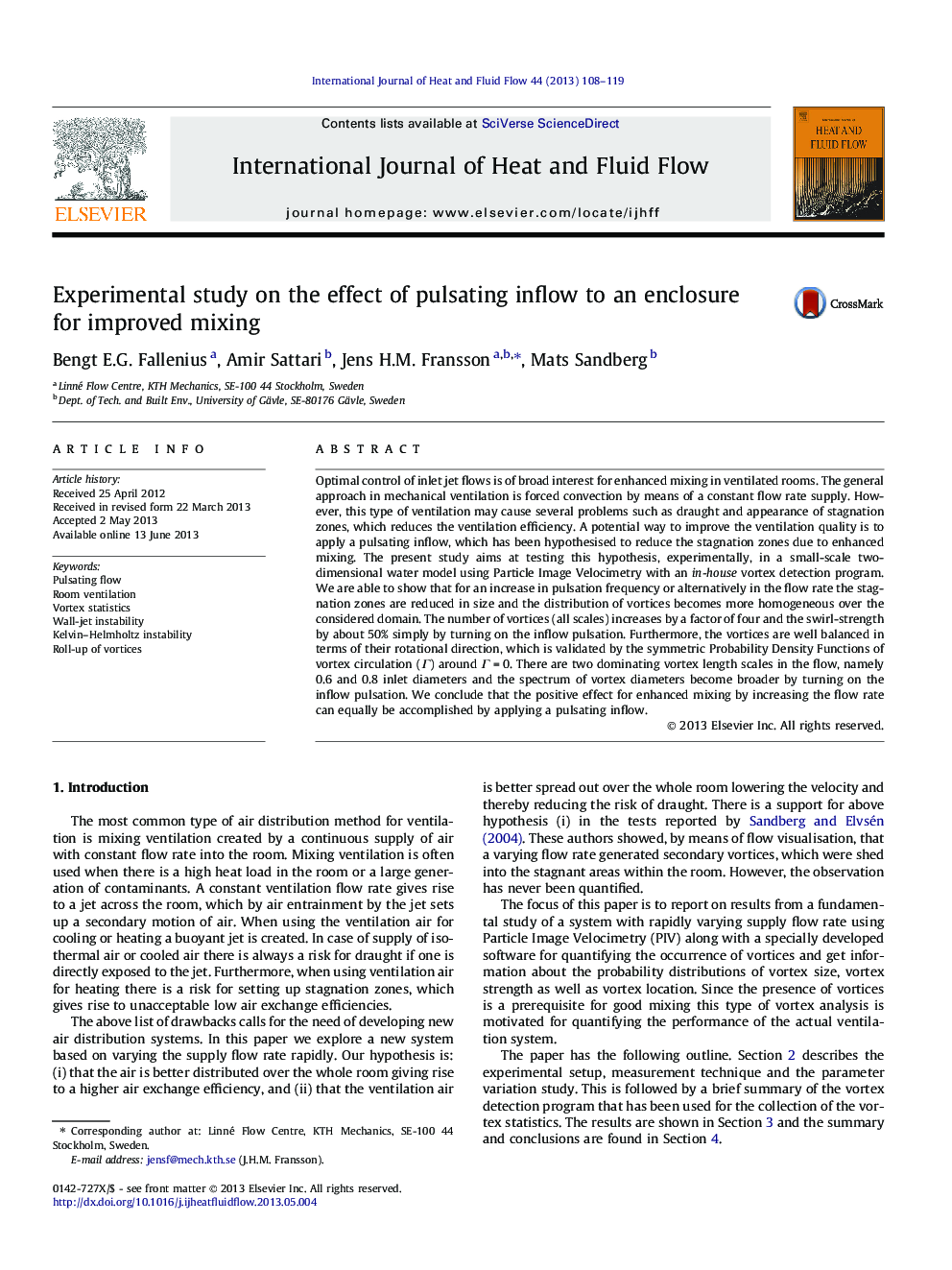| Article ID | Journal | Published Year | Pages | File Type |
|---|---|---|---|---|
| 655347 | International Journal of Heat and Fluid Flow | 2013 | 12 Pages |
Abstract
Optimal control of inlet jet flows is of broad interest for enhanced mixing in ventilated rooms. The general approach in mechanical ventilation is forced convection by means of a constant flow rate supply. However, this type of ventilation may cause several problems such as draught and appearance of stagnation zones, which reduces the ventilation efficiency. A potential way to improve the ventilation quality is to apply a pulsating inflow, which has been hypothesised to reduce the stagnation zones due to enhanced mixing. The present study aims at testing this hypothesis, experimentally, in a small-scale two-dimensional water model using Particle Image Velocimetry with an in-house vortex detection program. We are able to show that for an increase in pulsation frequency or alternatively in the flow rate the stagnation zones are reduced in size and the distribution of vortices becomes more homogeneous over the considered domain. The number of vortices (all scales) increases by a factor of four and the swirl-strength by about 50% simply by turning on the inflow pulsation. Furthermore, the vortices are well balanced in terms of their rotational direction, which is validated by the symmetric Probability Density Functions of vortex circulation (Î) around ÎÂ =Â 0. There are two dominating vortex length scales in the flow, namely 0.6 and 0.8 inlet diameters and the spectrum of vortex diameters become broader by turning on the inflow pulsation. We conclude that the positive effect for enhanced mixing by increasing the flow rate can equally be accomplished by applying a pulsating inflow.
Related Topics
Physical Sciences and Engineering
Chemical Engineering
Fluid Flow and Transfer Processes
Authors
Bengt E.G. Fallenius, Amir Sattari, Jens H.M. Fransson, Mats Sandberg,
